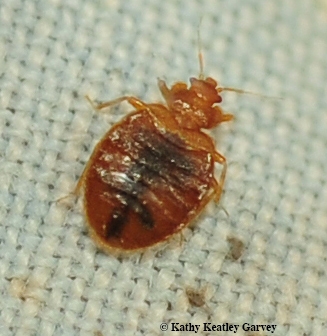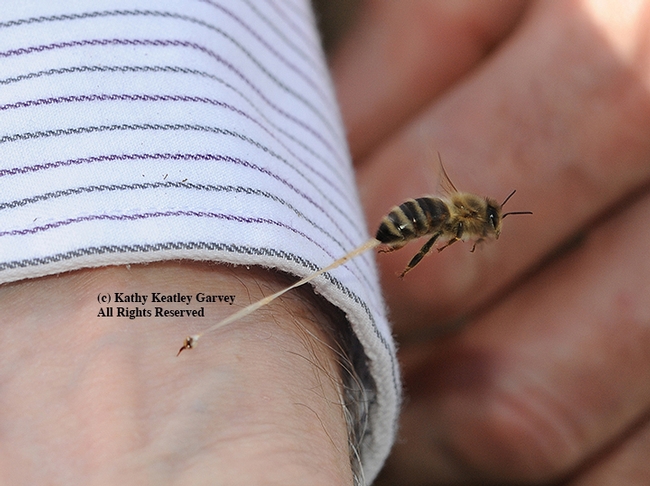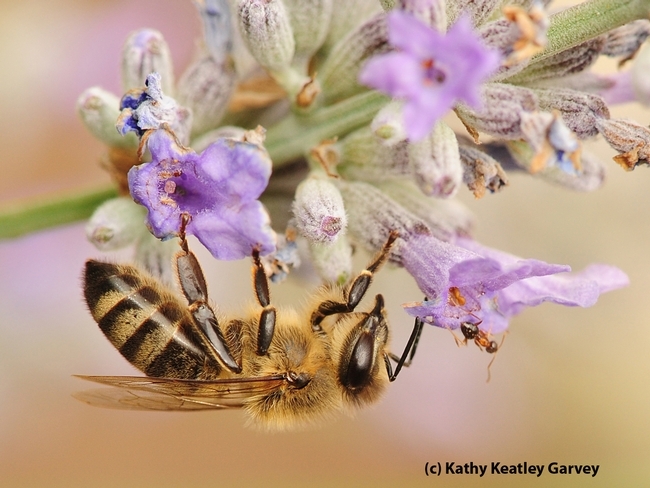
Hmmm, run that by again?
We've all written "please-let-me-do-this-over-again" answers on our tests, right? Too much coffee, too little time, too much anxiety, and too little comprehension? And no spell-check or thought-check? Check!
Professor Lynn Kimsey of the UC Davis Department of Entomology and Nematology--she's probably better known for her role as director of the Bohart Museum of Entomology--collects the strange, funny and odd answers that students pen on her tests in her Entomology 100 class.
Here's a sampling of her favorites from spring 2017:
- Locust go under behavioral, morphological, and physiological changes in a rapid amount of time with no warning.
- Because this is the lethal range of bed bugs, this will cause all of them to die without damaging or moving any furniture around the house.
- The danger of neonicotinoids are not in question, but rather there is still discussion on whether they are the primary source of alarm for honeybees when there are many other artificial chemicals they are equally exposed to.
- A large variety of evidence been presenting itself regarding this topic with many such papers contrasting what has previously been deemed certain.
- The spraying of insecticide is a very effective means of eliminating large areas of land where tsetse flies are commonly found.
- In understanding succession of insects, forensic entomologists can piece together the estimated time frame of when specific insects would have taken part in the decomposition of decaying carcasses and can provide a reasonable date of when the carcass would have died.
- This succession of insects is more important for dead carcasses that have been eaten off of for a long time.
- Seeing the oozing and blackened lesions, cysts, and tumors wrapping around its dead or dying victims, Europeans referred to plague as the Black Death, and they saw it as the end of the world.
- A disease such as this is easily dispersed by the vector flies and also infected mammals but especially in humans who, now more than ever, can travel long distances in very short periods of time.
- For example, C. thalictra, was first recorded participating in hematophagous behaviors when a scientist working on the project tested if the moth would feed on its finger.
- The number of those killed by bee sting is increasing yearly because of aggressive Africanized honeybees that are taking control of Texas.
 A close-up of an engorged bed bug. (Photo by Kathy Keatley Garvey)
A close-up of an engorged bed bug. (Photo by Kathy Keatley Garvey) - The idea that a minuscule mosquito could help transmit some of the most important pathogens of global diseases, was not an easy idea to grasp.
- On the head, they also have long, filiform antennae and mandibles for digestion and mating.
- In climates such as Sacramento, California native adults will begin to emerge in spring and summer months.
- Ants live a very foraging lifestyle, which allows them to have a mutualistic relationship with both insects and plants, as well as a parasitic relationship with their own kind.
- Today they use their large frame, powerful sting, and pure wit to dominate areas throughout Central and South America.
- Fleas do not "jump" like mammals do; fleas charge their elasticated legs with tensity, like a drawn bowstring, then shoot themselves through air.
- Due to their multi-stage, holometabolous lifecycle, fleas are not only talented at infesting their animal hosts, but also the dwellings of their hosts-such as houses, towns, cities, all of which harbor innumerable flea colonies.
- As Y. pestis grows in the proventriculus, they disturb the valvular function of the proventriculus, caushing a gut bloackage.
- Drones are distinguished from other bees in that they do not have a stinger.
- The fungi allows it to protect itself from harsh environment of the soil where it thrives.
- It is unknown if the hematophagous behavior is capable of transmitting disease between the same or different species, but if it were to, perhaps the safety from the moth would come into question giving this facilitative hematophagg ous group of organisms mirror like acknowledgment from that of obligatory hematophagous groups of organisms.
- Yet, the more feasible harm the moths would have on humans or other organisms' safety is in the agricultural realm.
- Nevertheless, bee stings can cause fatal effects on people in the United States; being among the direct deaths caused by animals since the allergic reaction of the poison kills 53 individuals every year.
- The female worker bees carry out large number tasks that are necessary for the continued existence of the hive thus they exist for six weeks due to constant laboring.
- These species are found exclusively in the Americas, or New World, and thrive throughout much of North and South America.
- Most species are seed harvesters, leaving the nest to collect resources and a variety of other items including dead or dying insects unlucky enough to wonder in their path.
- Though unclear how and when Triatoma infestans became domesticated, some predictions claim that it was first introduced into the human environment via vector transition from rodents inside their burrows to cave-like pre-Columbian peoples
- Killer bees can pursue people for more than a quarter mile when they are animated and antagonistic and die once they sting since the stingers are located at their abdomen.
Attached Images:


